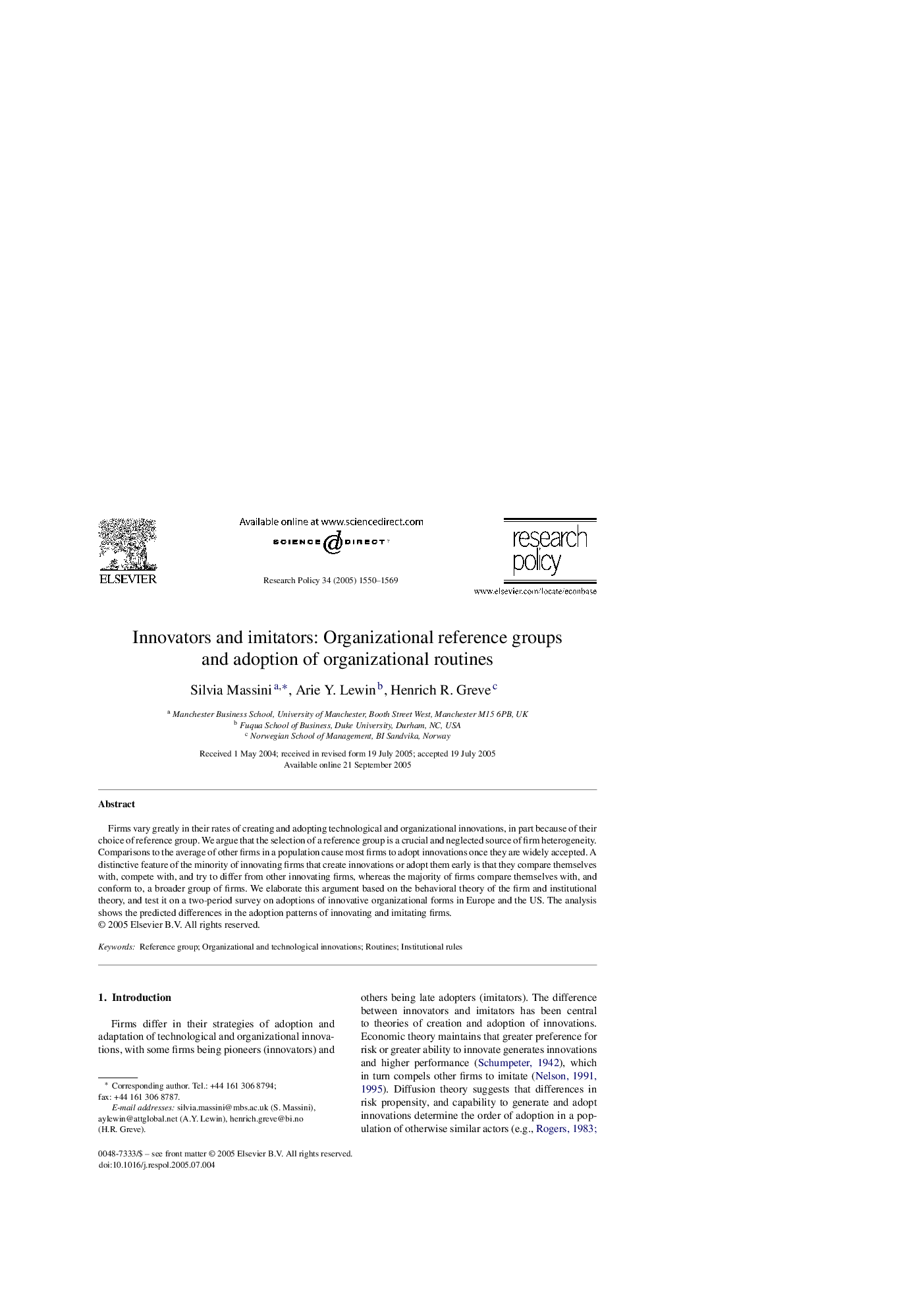| Article ID | Journal | Published Year | Pages | File Type |
|---|---|---|---|---|
| 10483233 | Research Policy | 2005 | 20 Pages |
Abstract
Firms vary greatly in their rates of creating and adopting technological and organizational innovations, in part because of their choice of reference group. We argue that the selection of a reference group is a crucial and neglected source of firm heterogeneity. Comparisons to the average of other firms in a population cause most firms to adopt innovations once they are widely accepted. A distinctive feature of the minority of innovating firms that create innovations or adopt them early is that they compare themselves with, compete with, and try to differ from other innovating firms, whereas the majority of firms compare themselves with, and conform to, a broader group of firms. We elaborate this argument based on the behavioral theory of the firm and institutional theory, and test it on a two-period survey on adoptions of innovative organizational forms in Europe and the US. The analysis shows the predicted differences in the adoption patterns of innovating and imitating firms.
Keywords
Related Topics
Social Sciences and Humanities
Business, Management and Accounting
Business and International Management
Authors
Silvia Massini, Arie Y. Lewin, Henrich R. Greve,
